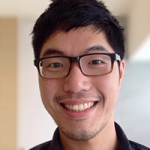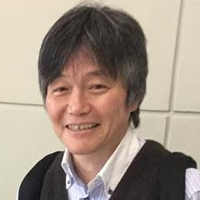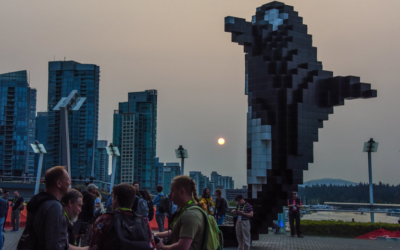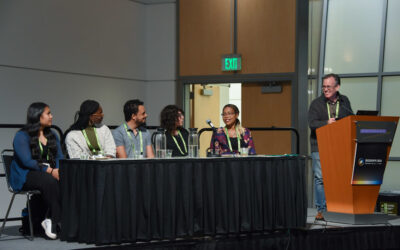This year’s SIGGRAPH Asia Conference will take place in Thailand, which has a growing industry and academic research in computer science and engineering. There will be three symposiums, Symposium on Education, Symposium on Mobile Graphics and Interactive Applications, Symposium on Visualization. We interviewed the Chair and Co-Chair of the Symposium on Visualization, Koji Koyamada of Kyoto University in Japan and Puripant Ruchikachorn from Chulalongkorn University in Thailand.
SIGGRAPH: Koji and Puripant, could you share with us your vision for the third Symposium on Visualization taking place in Thailand this year?
(Koji, Chair of Symposium on Visualization): Currently, we are living in an artificial intelligence (AI) era in which a machine learns many things from big data. What is the role of human being? I think that the human beings should learn essential things from big data to discover a knowledge. In this learning, a visualization becomes a key technology for the human beings to interpret data. I hope to discuss about the fusion of education and visualization for intelligence amplification (IA) of the human beings in this third symposium.
I think that a fusion of education and visualization is important since the visualization is mandatory to transfer big data into a human brain.
SIGGRAPH Asia 2017: Puripant, how would you deploy a session which realize such a fusion with the education chair? Also, I understand that Thailand’s visualization community is now in its infancy stage. What is your plan to grow a visualization community in Thailand?
(Puripant, co-Chair of Symposium on Visualization): Frankly, the research community on visualization in Thailand is small and I hope that SIGGRAPH Asia will be able to encourage more research work in this area. I think the community actually exists but people are in different communities, medical, engineering, data analytics, etc. so hosting the symposium and academic conferences once in awhile will increase the exposure of the field and people will naturally gather.
SIGGRAPH Asia 2017: Puripant, can you tell us about your background and research area in relation to the Thai industry and academia? What got you interested in this area?
(Puripant) I graduated from Stony Brook University and I am teaching at Chulalongkorn University. My research is about visualization and human-computer interaction, particularly how we understand and disseminate visualizations. Visualization is an interesting graphical application because it not only shows pretty pictures but also aids information comprehension. Its possible social impact drew me in. Since then, I have done some interactive data projects on corruption and transparency for Thai organizations and publications.
SIGGRAPH Asia 2017: What made you interested to be a co-chair of the SIGGRAPH Asia 2017 Symposium on Visualization?
(Puripant) As I mentioned earlier that visualization is not an active research area in Thailand, SIGGRAPH Asia 2017 in Bangkok is a good opportunity to get more exposure among local researchers whose work has some visualization aspects but is published elsewhere, for example, in medical, engineering, or data analytics conferences. Once they learn that people from different domains share similar central visualization problems, the community will naturally grow. Also, because visualization has a social element, I wish journalists or media consumers become more used to information-rich graphics and eventually develop data-driven culture in the age of “fake news.”
SIGGRAPH Asia 2017: Any advice for people considering to submit to your program?
(Puripant) Any topic is, of course, welcome. This year, the symposium on visualization is particularly keen on education-related work, either using visualizations as pedagogical media or teaching visualizations themselves. As we think that visualization can go hand-in-hand with education, there will be a special session for invited talks on the synthesis of both areas. Overall, I expect to see more local flavors such as case studies of visualization systems whose features may be unique to specific domains, languages, or cultures.
SIGGRAPH Asia 2017: Are there places and activities you personally recommend for attendees of SIGGRAPH Asia 2017 Bangkok conference in November?
(Puripant) Thai art scenes are growing. Besides many stand alone galleries, there are a few bigger centers that have no permanent collections and host rotating exhibitions all year-round. One notable venue is the Thailand Creative and Design Center (TCDC) which has just moved to a bigger building, the old central post office of Thailand. It plans to not only renovate the building but also reinvigorate the old neighborhood by Chaophraya river. Most exhibitions are visual arts but, from time to time, there are interactive exhibitions on local issues as well. Because we, as researchers, often look for a new problem to work on, TCDC is a good place to get some inspirations (and later grab a street food meal, followed by a cocktail at a rooftop bar.)
SIGGRAPH Asia 2017: The 10th ACM SIGGRAPH Conference and Exhibition on Computer Graphics and Interactive Techniques in Asia will take place in Bangkok, Thailand at The Bangkok International Trade & Exhibition Centre (BITEC) from 27 – 30 November 2017.
The submission deadlines* of the Symposiums are:
· Symposium on Education – 13 June 2017
· Symposium on Mobile Graphics & Interactive Applications – 21 June 2017
· Symposium on Visualization – 29 June 2017
* The submission time for all deadlines is 23:59 UTC/GMT.
For more information, please visit https://sa2017.siggraph.org/submitters





